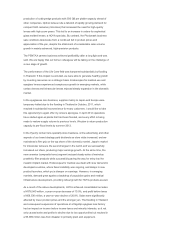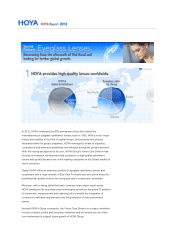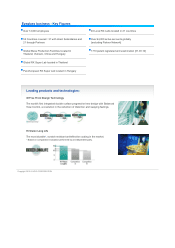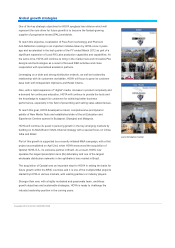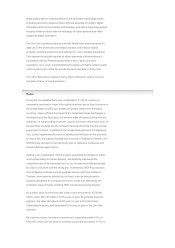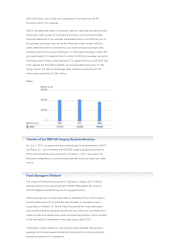Pentax 2012 Annual Report Download - page 59
Download and view the complete annual report
Please find page 59 of the 2012 Pentax annual report below. You can navigate through the pages in the report by either clicking on the pages listed below, or by using the keyword search tool below to find specific information within the annual report.
Making Crucibles (at the Time of
Foundation)
Aspherical glass molded lenses
HOYA's roots are in optical glass. The company was established in 1941 out of a
desire to manufacture optical glass in Japan rather than relying on imports from
Germany. At the time optical glass was a cutting-edge industry. When the war
ended HOYA overcame the devastation and at long last began manufacturing
crystal products. It subsequently changed its name to HOYA Crystal Glass
Manufacturing, Co., Ltd.. As the economy started to recover, demand for optical
glass returned, and HOYA recommenced shipments of optical glass for
binoculars in 1951 and color filters for cameras the next year in 1952.
A
major turning point came with the development of aspherical glass molded
lenses in the 1980s and acquisition of an optical lens plant. This marked the
company's full-fledged transition from manufacturing a material, glass, to
producing a processed product, lenses. At the time, camera manufacturers still
manufactured lenses themselves. HOYA therefore entered the market from the
upstream materials sector.
A
spherical glass molded lenses provided a tailwind. Lenses polished manually b
y
skilled craftspeople took a great deal of time to produce and were very expensive.
Molded lenses, which were manufactured by pressing glass softened at high
temperatures, established for HOYA an inexpensive way to mass produce lenses.
Given their shape characteristics, one aspherical glass molded lens could play
the same role as two polished lenses, which made it possible to make camera
HOYA Plant at the Time of Foundation (roofs for heat exhaust and chimneys, characteristics of glass manufacturing plant, are visible)


